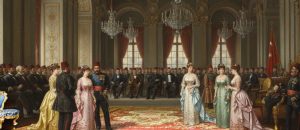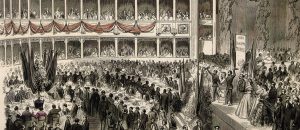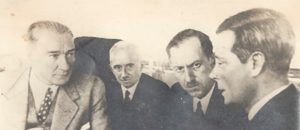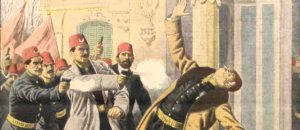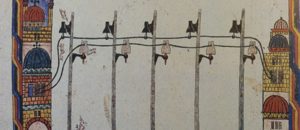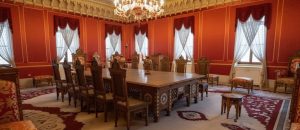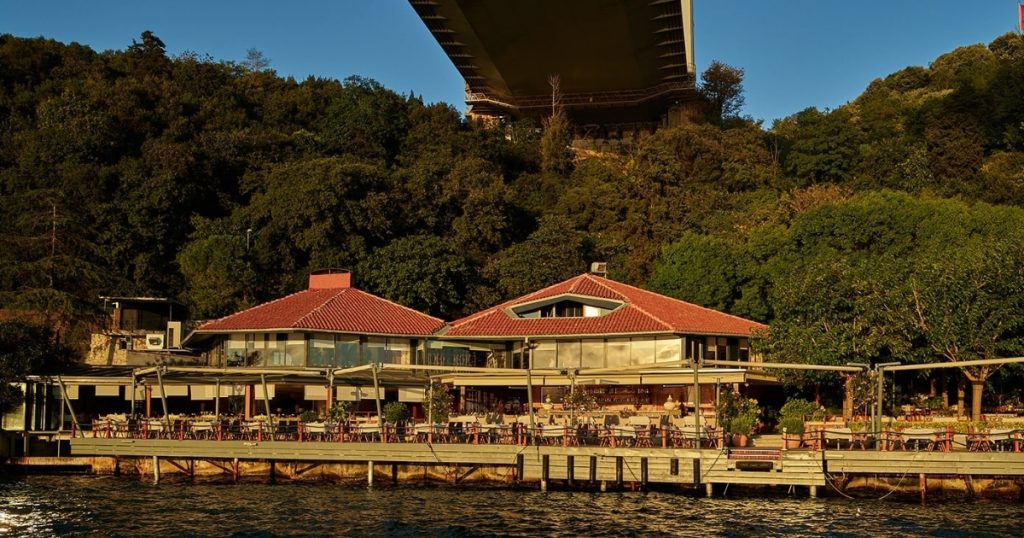Within the Dolmabahçe Palace complex, there was a Palace Theatre, which unfortunately does not stand today, but which once hosted the most refined artistic activities of Westernization. The construction of a modern theatre building by the order of the Sultan and the staging of opera and theatre performances on this stage by the palace’s own orchestra and European companies was one of the clearest steps demonstrating the sophisticated level the Ottomans reached in art and their desire to project the image of a modern monarchy. This theatre opened its curtain not just for a play, but also to showcase the empire’s cultural claim to the world. [Link: Life and culture in Dolmabahçe -> /learn/life-and-culture-in-the-palace]
Why a Palace Theatre?
In 19th-century Europe, almost all major palaces (Versailles, Schönbrunn, etc.) had their own private theatre halls. These theatres were not only for the entertainment of the dynasty but were also symbols of prestige demonstrating that the monarchy patronized art and culture. The Ottoman Palace’s decision to build its own theatre stemmed from the desire to be part of this “club of European rulers” and to prove that it was on the same cultural level as them. This theatre, commissioned by Sultan Abdülmecid and built by Architect Sarkis Balyan in 1858-1859, completed [Link: Dolmabahçe’s Western architectural identity -> /mermerden-daha-fazlasi-dolmabahce-mimarisi-neden-avrupaya-gonderilmis-bir-mesajdi] with an artistic institution.
A Modern Stage: The Architecture of the Dolmabahçe Palace Theatre
The theatre building, located behind the Dolmabahçe Clock Tower in the area that is today a car park, had all the characteristics of a Western-style opera house.
Interior Layout: With its horseshoe-shaped hall, boxes (loges), parterre (ground) seating, and large stage, it was an exact copy of a European theatre.
Acoustics and Technology: It was built according to the best acoustic knowledge of the period. Behind the stage, there were modern mechanisms that allowed for rapid changes of scenery, and dressing rooms.
Decoration: Its interior decoration, consistent with the rest of the palace, was adorned with gold leaf, red velvets, and plaster decorations. This made it not just a performance space, but an elegant venue that was part of the palace.
This structure was completely different from the more intimate and simple venues where Traditional Ottoman Performance Arts (Karagöz, Meddah, Ortaoyunu) were staged; it was an institutional and professional temple of art.
Who Was On Stage? Opera, Theatre, and Diplomacy
The curtain of the Dolmabahçe Palace Theatre opened for both local and foreign artists.
Italian Opera Companies: Since Italy was the center of opera art in Europe during that period, traveling Italian opera troupes (companies) coming to Istanbul regularly gave performances for the Sultan and invited guests at the palace theatre. Operas by Verdi and Rossini, in particular, were watched with great interest.
Muzıka-i Hümayun: The palace’s own orchestra [Link: Western notes of the palace -> /sarayin-batili-notalari-muzika-i-humayun-muzisyenlerinin-padisah-icin-caldigi-operalar], known as Muzıka-i Hümayun, played an important role in these performances, sometimes also giving their own concerts.
French Theatre: French theatre companies also represented another Western art tradition at the palace by staging works by classical writers like Molière.
Local Artists: Founders of modern Ottoman theatre, such as Güllü Agop, also sometimes had the opportunity to perform their plays at the palace.
These events were not just artistic activities. An opera performance held in honor of a foreign statesman was a diplomatic tool as effective as a political negotiation. This was an inter-civilizational dialogue that sent the message, “We understand the same art as you, and we applaud the same works.”
The End of an Era: The Demolition of the Theatre
Unfortunately, the life of the Dolmabahçe Palace Theatre was short. With Sultan Abdülhamid II’s [Link: Withdrawal to Yıldız Palace -> /camdan-saray-demir-irade-sultan-ii-abdulhamid-dolmahceyi-neden-terk-edip-yildiza-kapandi] withdrawal and the pursuit of a more introverted cultural policy, the theatre lost its former importance and fell into disrepair. Finally, in 1937, during the presidency of İsmet İnönü, it was demolished, disregarding its historical and artistic value, on the grounds that it obstructed a meeting between İsmet İnönü and Atatürk during a ceremony on the Bosphorus. Today, no trace of this elegant structure remains.
Conclusion
In conclusion, the Dolmabahçe Palace Theatre was the embodiment of one of the most sophisticated and audacious steps in the Ottoman journey toward Westernization. Commissioning a special opera house for a Sultan and regularly staging Western works of art there was the clearest declaration of the empire’s claim to be a cultural “European power.” When its curtain opened, it was not just a play, but the image of a modern monarchy that was being displayed. Although it does not stand today, this theatre, which once existed, is an unforgettable testament that Dolmabahçe was not just a residence, but also a living and breathing cultural center.







